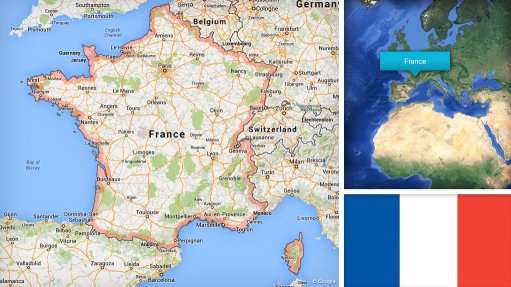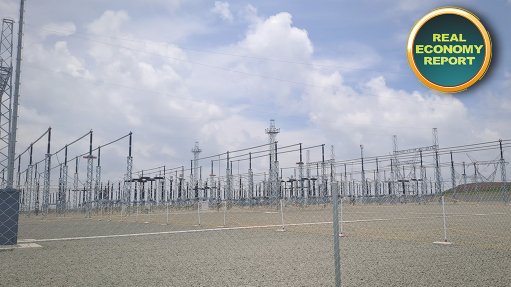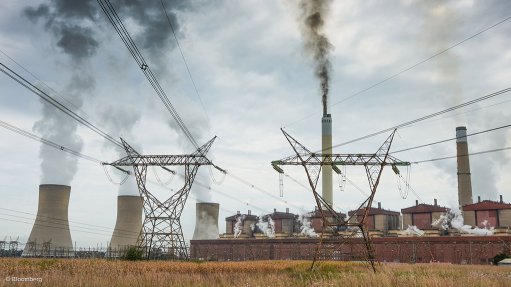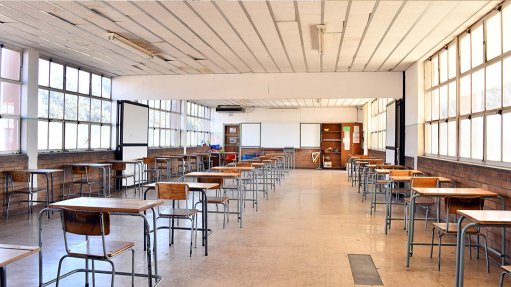CSIR’s frightening attitude towards renewable energy
Wikipedia says of the Council for Scientific and Industrial Research (CSIR): “[It] is South Africa’s central and premier scientific research and development organisation. It was established by an Act of Parliament in 1945 and is situated on its own campus in the city of Pretoria.”
About two years ago, I wrote an article in which I criticised the CSIR for conducting an environmental-impact assessment (EIA) for a wind turbine farm. The CSIR is government funded and I thought that EIAs should be done by professionals who trade in the business and not by scientific research institutes. I wrote three articles in total and, finally, the CSIR wrote a letter to Engineering News which deftly avoided answering the points that I had made. I had said that the CSIR’s EIA was flawed and why, and all the council said was, in effect, I should have told them earlier.
I pointed out that part of the noise-impact report was plagiarised (that is, stolen) from a US report and the CSIR made no comment.
There is something frighteningly sinister about the CSIR’s attitude to renewable power. A recent media release from the organisation contains the following statement: “Individual solar photovoltaic (PV) and wind farms exhibit strong short-term (intrahour) variability. However, the portfolio effect of aggregating the power output of several farms spread over a wide area leads to the disappearance of intermittency and short-term fluctuations. The aggregated wind portfolio power output exhibits intraday variability with changes over several hours. This level of variability is more manageable from a system operator’s point of view.”
For those of you who cannot digest sentences of such appalling grammatical complexity, simplified, this means: “The sun doesn’t shine at night and some days are windless.”
Further, the report says: “Wind and solar PV are complementary, with wind supply peaking in the evening and solar PV peaking at midday.” Translating, once more: “The sun is hottest at midday and the wind blows mostly in the evening”. Right?
Now, bear in mind that these statements come from “South Africa’s central and premier scientific research and development organisation”. I am merely a humble engineer but I can tell you the following facts:
• The Guinness book of records lists Pretoria as the least windy city in the world. It is quite sunny, particularly in winter. Thus, it is a good candidate for a solar farm. Unfortunately, the cost of property in Gauteng would never justify such a development.
• Port Elizabeth is the windiest city in South Africa.
• Upington is the sunniest city in South Africa.
I do not know what the people at the CSIR are smoking but I know for sure that the wind in Port Elizabeth and the Western Cape does not, in my experience, “blow mostly in the evening”, but mostly during the day.
But let us assume, for the sake of argument, that, in Port Elizabeth, the wind blows mostly at night and in Upington the sun is hottest during the day. So what? The two places are 900 km apart. To suggest that these two generation facilities can support each other over such a distance is ridiculous. So, clearly, the answer is to build a PV farm and a wind turbine farm next to each other. Also ridiculous.
It seems to me that the CSIR is trying to reinvent itself as the brave champion of wind power – for what reason? Does it have a hidden financial interest? The German wind turbine manufacturers are facing hard times. Are they and the German Fraunhofer Institute using the CSIR as a vehicle to push their interests in Sourh Africa?
Further in the report the following gems: “A share of 50% wind energy in South Africa’s electricity supply does not increase the short-term (intrahour) gradients if the wind fleet is widely distributed; no negative impact on reserve requirements. “Up to a 65% energy share in electricity supply from a combined wind and solar PV fleet can be achieved without any significant excess energy.” Huh? “Without any excess energy?” What? Such a statement should not be regarded lightly. It should be framed as a supremely fine example of green energy jargon and should be shown to schoolchildren.
Article Enquiry
Email Article
Save Article
Feedback
To advertise email advertising@creamermedia.co.za or click here
Comments
Press Office
Announcements
What's On
Subscribe to improve your user experience...
Option 1 (equivalent of R125 a month):
Receive a weekly copy of Creamer Media's Engineering News & Mining Weekly magazine
(print copy for those in South Africa and e-magazine for those outside of South Africa)
Receive daily email newsletters
Access to full search results
Access archive of magazine back copies
Access to Projects in Progress
Access to ONE Research Report of your choice in PDF format
Option 2 (equivalent of R375 a month):
All benefits from Option 1
PLUS
Access to Creamer Media's Research Channel Africa for ALL Research Reports, in PDF format, on various industrial and mining sectors
including Electricity; Water; Energy Transition; Hydrogen; Roads, Rail and Ports; Coal; Gold; Platinum; Battery Metals; etc.
Already a subscriber?
Forgotten your password?
Receive weekly copy of Creamer Media's Engineering News & Mining Weekly magazine (print copy for those in South Africa and e-magazine for those outside of South Africa)
➕
Recieve daily email newsletters
➕
Access to full search results
➕
Access archive of magazine back copies
➕
Access to Projects in Progress
➕
Access to ONE Research Report of your choice in PDF format
RESEARCH CHANNEL AFRICA
R4500 (equivalent of R375 a month)
SUBSCRIBEAll benefits from Option 1
➕
Access to Creamer Media's Research Channel Africa for ALL Research Reports on various industrial and mining sectors, in PDF format, including on:
Electricity
➕
Water
➕
Energy Transition
➕
Hydrogen
➕
Roads, Rail and Ports
➕
Coal
➕
Gold
➕
Platinum
➕
Battery Metals
➕
etc.
Receive all benefits from Option 1 or Option 2 delivered to numerous people at your company
➕
Multiple User names and Passwords for simultaneous log-ins
➕
Intranet integration access to all in your organisation

















